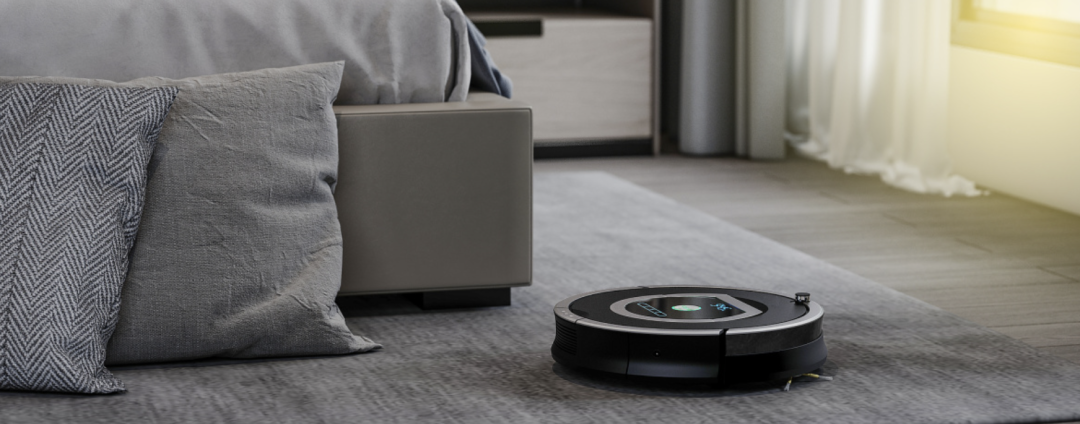["Industry In-depth Research] Why DJI, More Suited for Robotics than Honor, Chose to Make Robotic Vacuum Cleaners?
![]() 06/17 2025
06/17 2025
![]() 481
481

Author | Yuan Fang | For more financial information, visit BT Finance Data Hub. This article contains 2,319 words and is expected to take 6 minutes to read.
DJI and Honor, two seemingly unrelated technology companies, have recently been discussed together due to their entry into the same sector.
Recently, DJI officially announced its entry into the robotic vacuum cleaner market, while Honor also confirmed its layout in the robotics business. The strategic choices of these two technology giants have sparked heated discussions in the industry: As the global leader in drones, DJI's technological accumulation in the field of robotics is obviously deeper than that of Honor. Why did it choose to enter the seemingly "low-threshold" robotic vacuum cleaner market? And why did Honor, as a mobile phone manufacturer, dare to challenge the high-tech barrier industry of robotics?
An intriguing question arises: DJI is clearly more suited to making robots than Honor, so why did it choose the seemingly low-threshold path of "cleaning"? And as a mobile phone manufacturer, what gives Honor the courage to venture into robotics?
1
DJI's Technology Spillover and Dimensionality Reduction Strategy
DJI is the global leader in drones. What is its core competitiveness? Flight control, AI vision, automatic obstacle avoidance, high-precision navigation—these technologies are also the core of robotic vacuum cleaners. To maximize the commercial value of these technologies, robotic vacuum cleaners are indeed the optimal solution.
Firstly, from a technology matching perspective, the functions required by robotic vacuum cleaners, such as automatic navigation, path planning, and obstacle recognition, highly overlap with DJI's drone technology. An internal engineer at DJI revealed, "With slight adjustments to our visual positioning system, we can improve the mapping accuracy of the robotic vacuum cleaner by 30%."
Secondly, considering market maturity, according to GFK data, the market size of robotic vacuum cleaners in China reached 15 billion yuan in 2023, with a compound annual growth rate exceeding 25%. This large and fast-growing market needs technological innovators like DJI to break through homogeneous competition.
More importantly, the robotic vacuum cleaner is a proven business model. Pioneers such as iRobot and Ecovacs have completed market education, allowing DJI to enter the market with a light load and focus on technological upgrades and experience optimization.

In other words, DJI's entry into the robotic vacuum cleaner market is almost "technology reuse," with a difficulty far lower than starting from scratch. For example, the visual SLAM (Simultaneous Localization and Mapping) on drones can be directly used on robotic vacuum cleaners, which is cheaper and more flexible than traditional LiDAR solutions.
The obstacle avoidance algorithm on drones can make robotic vacuum cleaners smarter and reduce the embarrassment of getting stuck under sofas. DJI's supply chain and manufacturing capabilities enable rapid mass production and cost reduction.
So why didn't DJI directly make "more advanced" robots, such as industrial robots or service robots? The answer is simple: market maturity. The robotic vacuum cleaner market is already worth tens of billions of yuan, with an annual growth rate exceeding 20%. While the industrial robot market is large, it has high barriers and long cycles, requiring in-depth cultivation of B-end customers. DJI chose to eat the "low-hanging fruit" first, quickly monetize mature technologies, and gradually extend to high-end products—this is very consistent with its pragmatic style.
2
Is Honor's Mobile Phone Growth Peaking, and Must It Tell a New Story?
Honor's robotics strategy seems more like a "have to do" breakthrough.
In contrast, Honor's logic for entering the robotics field is completely different. Against the backdrop of peak growth in the mobile phone market, Honor needs new stories to support its valuation. However, the choice of robotics indirectly confirms Honor's determination to break through.
Honor's advantage lies in intelligent terminal ecology and user operations, but it is almost blank in the core technical fields required for robots, such as motion control and mechanical design. An industry analyst bluntly stated, "Honor making robots is like asking someone skilled in software to make cars; different industries are like different mountains."
A possible breakthrough lies in Honor adopting an "asset-light" model: focusing on consumer-grade robots for specific scenarios, such as educational companion robots; or cooperating with professional robot manufacturers to provide intelligent interaction solutions. But once this path is cleared, it will be a broad road in the future.
The mobile phone industry has entered a stage of stock competition. Even though Honor performs well in the domestic market, it also faces a growth ceiling. At this time, it needs a new growth point, and robotics happens to be a track that can both capitalize on AI trends and increase valuation.
But the question is: What technological accumulation does Honor have? It excels in mobile phone chip tuning, imaging algorithms, and user ecology, but these are not widely applicable in the robotics field; robots require motion control, mechanical design, and sensor fusion, which are precisely Honor's weaknesses.
Therefore, Honor's robotics business will likely adopt an "asset-light model": collaborative research and development, partnering with universities or robotics companies, providing brands and channels. Some also believe that Honor's robots may focus on niche scenarios, such as educational robots and home companion robots, rather than hardcore industrial or service robots.

If Honor's robots can access Huawei's HarmonyOS in the future, they may be able to share a slice of the pie due to their ecological advantages. However, this path carries considerable risks, as Xiaomi's CyberDog (robotic dog) is still being observed by the market.
3
Who Made a Smarter Choice in the Robotics Track?
Comparing the strategies of the two companies, DJI is clearly more stable. The technology matching is high, drones and robotic vacuum cleaners share core technologies, research and development costs are low, and the market is more mature. Robotic vacuum cleaners have been accepted by consumers, while service robots are still in the market education stage. In addition, DJI faces healthier cash flow, able to rely on drones for funding, while Honor's investment in robotics may drag down performance.
DJI's robotic vacuum cleaners are just the first step. In the future, it is likely to extend into household service robots (such as window cleaning robots and security robots) and even enter the industrial inspection field. In contrast, Honor faces many unknown factors, and establishing a firm footing in the robotics track will require facing many challenges.
The choices of these two enterprises reflect two typical models of technological industry development:
DJI represents the "technology-driven" development path, starting from core technologies and finding the most suitable commercialization scenarios. Its development trajectory is: technology accumulation - productization - market expansion.
Honor, on the other hand, adopts a typical "market-driven" approach, starting from market demand and reverse-engineering technology resources. The risk of this model lies in the fact that when core technologies do not match the target market, it is prone to facing too many challenges.
It is worth noting that the two companies may meet at the intersection of "household service robots." DJI extends upwards from cleaning scenarios, while Honor permeates downwards from interactive experiences. At that time, the real competition will begin.
However, at this stage, DJI clearly occupies a more favorable position. Its technological reserves have a higher degree of matching with the target market, and the commercialization path is clearer. Honor, on the other hand, needs to prove that it can navigate this high-difficulty track despite the lack of core technological accumulation.
Perhaps the greatest revelation from this misplaced competition is that in the technology industry, choice is more important than effort. Finding the best combination of technology and market is the key to business success.
This article is an original article by BT Finance and may not be used, copied, disseminated, or adapted without permission. Legal responsibility will be pursued for any infringement.







